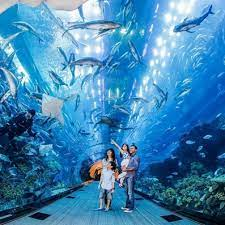
In a world where consumers are spoilt for choice and convenience, the retail industry is evolving to offer more than just products and services. Retailers are embracing a new strategy to captivate shoppers and keep them coming back for more – enter retailtainment.
What is retailtainment?
Retailtainment is, you guessed it, the fusion of retail and entertainment. A strategy that integrates an entertaining or immersive element into the retail experience. It’s about making shopping not just a transaction but an engaging, enjoyable and memorable event for customers.
The term was initially created by sociologist George Ritzer as ‘the use of sound, ambiance, emotion and activity to get customers interested in the merchandise and in the mood to buy.’
Retailtainment is all about creating moments of joy and connection, making shopping an exciting and unforgettable journey, it is a transformation of the retail industry.
The evolution of retailtainment
Retailtainment, is not a new concept, but has evolved and adapted over the years.
In recent years, we have seen huge growth in retailtainment. This is thanks to the rise of online shopping resulting in customers spending less time at bricks-and-mortar stores, and changing perception to see shopping as an experience.
Retailers have recognised that creating relevant and engaging spaces is key to attracting and captivating customers. Ultimately encouraging them to spend more time, and money in their stores and to keep them coming back.
This concept began with the morphing of shopping centres, incorporating cinemas, bowling alleys and gaming areas with retailers. There was massive growth of this in North America and The Middle East. For example, Dubai being the first to incorporate ice-skating rinks and aquariums into shopping centres.
Retailtainment today is far more diverse with experiential stores, interactive technology, pop-up shops, entertainment beyond shopping and personalisation. Take a look at some retailers who are leading the curve with retailtainment.
Experiential stores
The idea surrounding experiential stores is to provide a unique, immersive and interactive shopping environment that encourages consumers to connect with a brand on a deeper level. A brand that does this extremely well is US beauty company, Glossier.
Glossier’s stores are designed so that customers can get lost in an experience. Most stores feature experiential zones that showcase products but also create lasting memories for visitors.
Their target customers are technology saavy, yet will line up to buy products. Why? They are waiting in line to experience a brand that engages them. In return, Glossier has incredible loyal and dedicated customers.
Interactive technology
With technology rapidly transforming many industries, it is no surprise that the retail industry is also seeing this impact. The integration of interactive technology can be harnessed to create engaging, customer-centric shopping experiences and connect with customers in innovative ways. There are many forms of interactive technology from interactive shop windows to self-order kiosks, beacons, RFID tagged smart products and VR.
One of my favourite examples of a brand successfully implementing interactive technology is Nike - specifically their digitally infused Rise concept.
Nike Rise stores feature:
- large, up to 3 story digital screens that display real-time running stats from the local community and city-specific data from programs such as Nike Run Club
- interactive RFID-powered tables where shoppers can place different shoes and get information before making a purchase.
- their Miami has a Sports Hubs which offers members convenient online-to-offline services such as digital returns, curb-side pickup, scan to learn and buy online pickup in-store.
Pop up shops
Temporary retail spaces have shaken up the traditional retail model, and created a unique shopping experience for brands and customers that offers a sense of exclusivity. A brand that absolutely nails pop ups shops is Jacquemus. They make shopping for a luxury item fun and immersive - completely contrasting typical luxury shopping experiences.
Check out the gallery below of different pop-ups. The brand often features vending machines, exclusive colour-ways, exclusive merch, creative displays - and even an interpretation of the founder's own bathroom!
Personalisation
A company that does personalisation well is Starbucks. Their app - which is one of the most downloaded restaurant apps, has great personalisation features. Starbucks remembers customers' favourite drinks and preferences and rewards them with perks and freebies based on their preferences and past activity. Starbucks utilises AI algorithms to send more than 400,000 variants of personalised messages - so customers really feel heard by the brand.

Retailtainment is more than just a trend, it’s a transformation of the retail industry. It’s all about creating moments of joy and connection, making shopping an exciting and unforgettable journey.
As technology continues to advance and customer expectations evolve, retailtainment is critical to create experiences that cannot be achieved online or at home. So, be prepared as retailtainment continues to redefine the way we shop.






























Comments